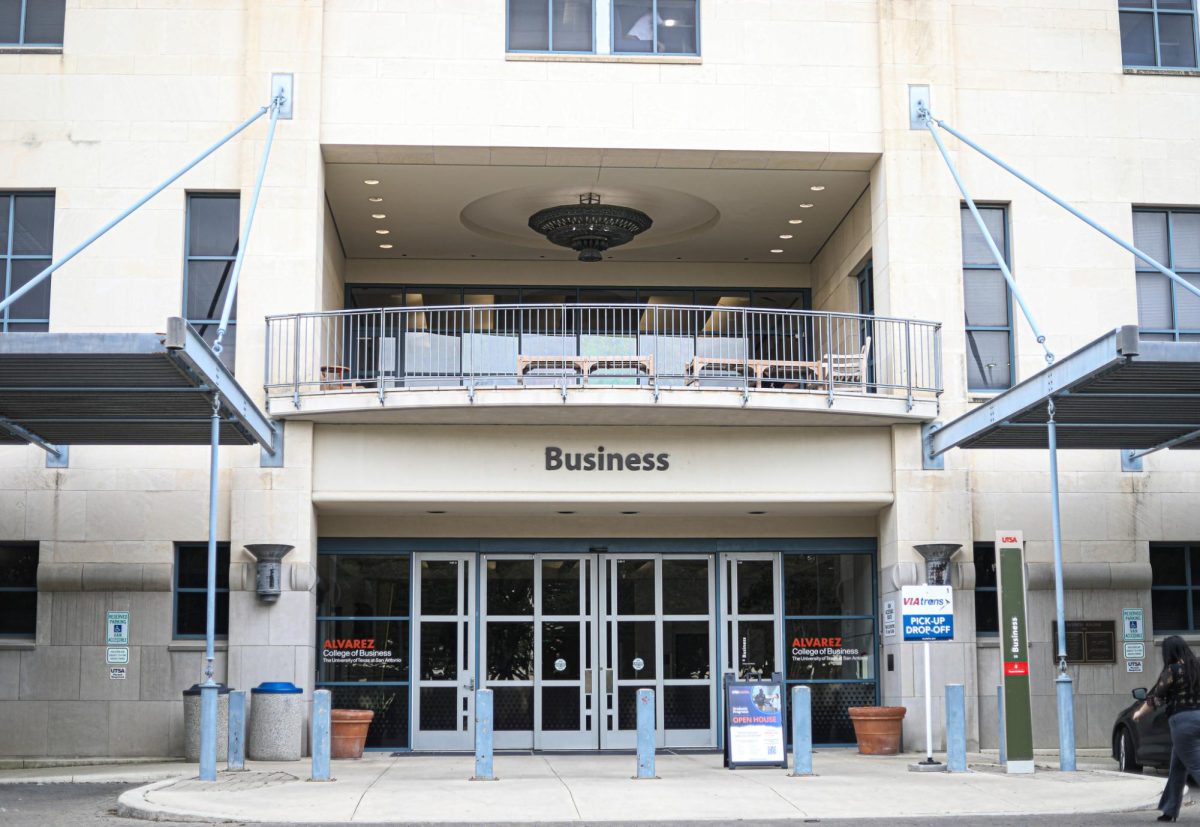
They sat in an unfinished building on a bitterly cold day. The moment that would change history was approaching. On March 2, 1836, 44 men would sign two documents that would mark a turning point in history.
The delegates had come to Texas from the United States, Europe and Mexico to a convention to draft a government in a town aptly named Washington-on-the-Brazos. They were meeting to draft a Declaration of independence.
That cold March day was just one in line of events that has come down through History as the Texas Revolution.
“The key is that the revolution is the moment when Texas goes from under the rule of a Spanish speaking government to an English speaking government,” said professor of Texas History Dr. Patrick Kelly. The revolution has been seen as a great event where all of Texas won, but that is not really true.
“The big winners are the Anglos,” Kelly said. “The big losers are the Tejanos like Juan Seguin.”
Seguin had been an important part of winning the Revolution, carrying messages from the Alamo and then serving as Alcalde (mayor) of San Antonio. He would not stay long in San Antonio.
“Seguin is driven out of San Antonio in the 1840s,” Kelly said. “He was not wanted in Mexico; they saw him as a traitor.”
Seguin was a part of a group known as the Tejanos. Tejano was anyone living in Texas, regardless of former nationality but it has since come to mean a person living in Texas at the time who had come from other parts of Mexico.
“The Tejanos were the smallest european group in Texas,” Kelly said. “They became a people without a country.”
The biggest reason for the displacement of the Tejanos was the wave of immigrants who came into Texas during the Republic years.
“The people who came into Texas after the revolution saw any Mexican as having been the enemy,” Kelly said. “They failed to make the distinction and so the Tejanos were driven to the border region. The Tejanos became deeply marginalized.”
In nearly every major war in American History, Native American tribes played a part. That was not the case in the Texas Revolution.
“The Comanches were the most powerful Indian group but they were west of what is Texas at the time,” Kelly said. “The Comanches didn’t see Texas as we see Texas.”
While the Comanches were too far north and west of the main action in the war, the Cherokees were offered a reward for their neutrality.
“The Cherokee had come into Texas beginning in the 1820s,” Kelly said. “Houston had lived with the Cherokee and promised land if they remained neutral.”
Houston signed a treaty with the Cherokee. The treaty was ruled null and void by Houston’s successor as President of the Republic, Mirabeau Lamar.
“Lamar wanted the Cherokees out,” Kelly said. “There was a paranoia that the Cherokees and Mexicans would join forces against the republic.”
The years in which Texas fought it’s revolution with Mexico were chaotic times in the country. Santa Anna had abolished the national constitution of 1824 which led to revolts across Mexico.
“There was a nation wide rebellion in Mexico, the Yucatan breaks off; Zacatecas breaks off,” Kelly said. “Santa Anna crushes the Zacatecas rebellion.”
In the end, perhaps the most important thing that Texas had that other provinces didn’t was it’s location in Mexico.
“What Texas had that the others didn’t have was that it was next door to the United States. Texas because of it’s geographical location is successful in breaking off.”
Before Texas could break off it would have to fight. The first event of the revolt would take place at Anahuac in June 1835, when William B. Travis would lead a company of 25 men and drive a force of 40 Mexican soldiers from the garrison at Anahuac.
“Travis Takes Anahuac, Santa Anna decides he has to come in and crush the rebellion,” Kelly said, “He builds up a massive army but he sends General Cos up as a first strike force.”
In the months leading up to the beginning of the revolt, Cos set up command in San Antonio. To the east was the town of Gonzales and in that town the Texan’s held a cannon given to them by the Mexicans for Indian defense.
“Cos takes over San Antonio,” Kelly said. “He tries to retrieve the cannon from Gonzales.”
In what became known as the Battle of Gonzales, in October 1835, the Texans retained their cannon, killed one Mexican soldier and touched off the Texas Revolution.
Fresh from their victory at Gonzales, the Texans moved on the critical stronghold at Goliad.
“The Texans take Goliad which is significant because it cuts Cos off from the Gulf,” Kelly said.
As fall turned into winter, the Texans turned their sight onto Texas’ biggest city at the time, San Antonio. A large battle is fought in December 1835 with the Texans taking control of San Antonio. The Texans then nearly make a terrible mistake but Sam Houston averts what could have become a disaster in Matamoros.
“The Texans decide they want to link up with the people against Santa Anna in Matamoros,” Kelly said. “Houston persuades them to turn around and he sends a portion back to the Alamo.”
In that portion sent to the Alamo are two names that would come to be seen by generations of Texans as Lone Star martyrs, William Travis and Jim Bowie. Both Travis and Bowie bring a number of men to fight with them but both had command of the Alamo garrison.
“What you have at the Alamo are three kind of crews,” Kelly said. “You have Travis’ crew, Jim Bowie’s crew and Crockett just kind of shows up by mistake.”
The Battle of the Alamo would begin with the Texans awakening on February 23rd to the sight of the Mexican Army approaching San Antonio.
“The defenders were celebrating George Washington’s birthday [on the 22nd],” Kelly said. “On the 23rd, one of Travis’ men goes to the top of San Fernando Cathedral and sees the Mexican army.”
What the man saw was the first wave of troops sent by Santa Anna to take back San Antonio.
“Santa Anna is on the way,” Kelly said. “His artillery did not make it to the Alamo in time.”
The Texans head for the Alamo where they will hold Santa Anna occupied for thirteen days. In those thirteen days, a turning point would be reached.
“Santa Anna decides he is going to kill everyone,” Kelly said. “He had been here in 1813 [during the Mexican revolution from Spain] and taken part in a massacre in 1813.”
William Travis, who had been given the rank of Lieutenant Colonel, tried to save the garrison but when his surrender offer was refused, he sent for re-enforcements at Goliad.
“Travis tries to surrender but Santa Anna won’t let him,” Kelly said. “Seguin is sent to deliver a message to [Colonel James] Fannin at Goliad.”
On March 2, while Travis fought at the Alamo and Fannin held on at Goliad, the Texans declared Independence. Four days later, on March 6, 1836. The Alamo falls at dawn with only a few women and children surviving. Two weeks after the Alamo falls, Fannin is routed at Goliad.
“What happens is after these early Texan victories, Santa Anna wins at Alamo and Goliad,” Kelly said. “Santa Anna then messes up, He doesn’t chase the Texans to the extent that he could.”
Santa Anna then made a mistake that would cost him dearly. He slowed his march across Texas and gave Houston a chance to build an army.
“He gives Houston breathing room and time to drill his army,” Kelly said. “There is a lot of speculation that Houston wanted to take his army closer to Louisiana to draw the US Army in. There was a guy named Gaines who was a US Army Captain right on the border.”
The speculation about Houston could stem from the fact that before he came to Texas, he had been under the wing of President Andrew Jackson.
“Houston was a protege of Andrew Jackson,” Kelly said. “There was speculation [at the time] that Ho
uston would draw the Mexican army toward Louisiana and Gaines would come in and the US army would defeat the Mexican army.”
The possibilities of a meeting of Gaines and Houston and U.S. intervention are tantalizing but it was not to be as the Texan soldiers set an ultimatum.
“At that point Texas might have become part of the United States in 1836 rather than 1845,” Kelly said. “No one knows for sure but the soldiers force Houston to fight and they just caught Santa Anna napping.”
The place where the Texans caught Santa Anna napping was a swampy patch of land near what is now the Houston Ship Channel. It is known as San Jacinto. On April 21, 1836, The Texans defeated the Mexican Army and the Republic of Texas was born.
“Even after San Jacinto, the Mexican army was bigger than the Texan army,” Kelly said. “The general here followed Santa Anna’s order and withdrew.”
The Texans had won. But what would have happened if they had lost and Texas had remained a province in Mexico.
“It is hard to see how the US would not have taken Texas; there was a fear among the slaveholders that Mexico would abolish slavery in Texas,” Kelly said. “The slaveholders feared that if slavery didn’t grow it would die. Their biggest fear was a slave-free Texas.”
The next ten years would be a chaotic time in Texas as the Republic tried to survive on wobbly legs.
“The Texas Republic was a shell; it didn’t have much power; it was broke; it claimed to stretch to the Rio Grande but it didn’t,” Kelly said. “It was an exceptionally weak entity. That’s why in 1845, the vast majority of Texans voted to join the Union. They were quite happy to let Washington take over.”
If there was one thing going for Texas, it was that nations were quick to recognize its independence. Great Britain, France, and the Netherlands quickly recognized the new Republic. The United States recognized Texas in 1837.
“England recognizes Texas but they force Texas to stop the African slave trade,” Kelly said. “Southern slaveholders are convinced that Britain would come in and have so much influence in Texas that they could persuade Texas to abolish slavery.”
The possibilities of a British-controlled Texas was unacceptable to Americans who had fought two wars against Britain in the previous 60 years.
“The Southerners use the Britain issue to convince doubters to annex Texas and make it a state.” Kelly said.
The Republic years were an important time for Texas as it began to emerge as a major player on the international stage.
“Texas plays a big national and international role,” Kelly said. “Texas Independence is very significant.”
After 1836, Texas had recognition from other nations of the world, but the one that was most important, Mexico, still saw Texas as a province in revolt.
“The Revolution didn’t solve a lot of problems,” Kelly said. “Texas broke from Mexico but Mexico never recognized Texas.”
The years of the Texas Republic were years of great anxiety both in Texas and in the United States as Britain’s interest in Texas cotton led to the South pushing for annexation.
“There is real concern by the slaveholders that Texas will slip through their grasp,” Kelly said. “They really wanted Texas.”
The anxiety west of the Sabine was just as high. Ten years of fighting Native Americans and Mexicans was taking its toll on Texans.
“Most white Texans wanted to be part of the United States, they feel a real kinship,” Kelly said. “Washington is more powerful than Austin, most Texans wanted to fold themselves into the United States because the United States was so much stronger.”
In the United States, many people wanted to annex Texas in 1836 but the controversy of slavery expansion kept Texas from being annexed for ten years.
“Slave politics kept Texas out of the union after the revolution,” Kelly said. “By 1845 slaveholders were able to convince enough northerners to add Texas.”
Lost in the events that led to Texas becoming a state in 1845 is the effect the loss of Texas had on Mexico. Texas was the beginning of a shift in power in the southwest as the U.S. received half of Mexico’s territory in 1848.
“The loss of Texas was a catastrophe for Mexico,” Kelly said. “That is something that is easily forgotten.”











